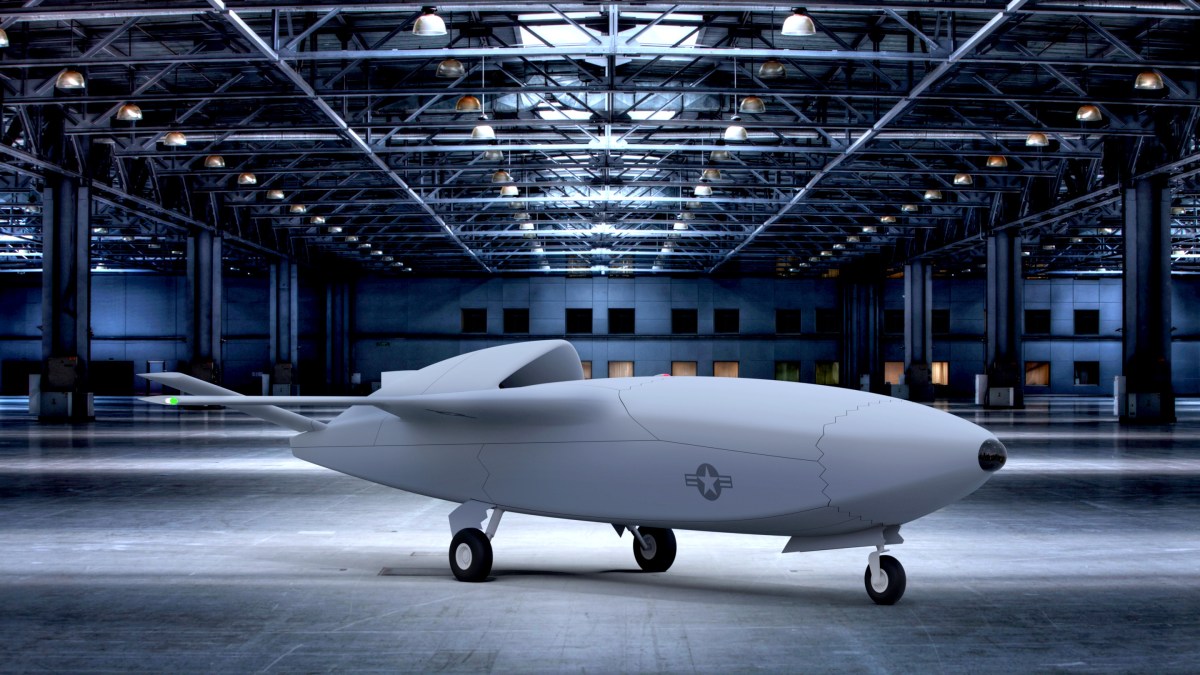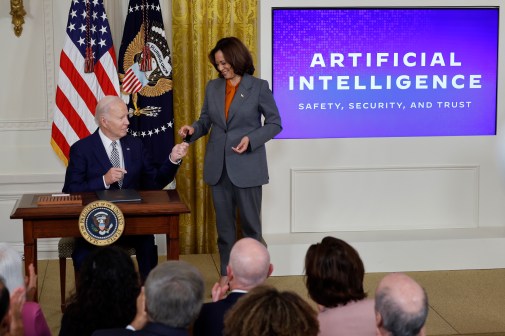Air Force chief ready to ‘gamble’ on fast-tracking new drones

The head of the Air Force intends to fast-track the development of new drones even if it means taking on additional risk.
The service wants new robotic wingmen and other unmanned systems to help maintain air superiority against advanced adversaries.
“The guidance I’ve given to the acquisition people in the Air Force is to set up programs so that they get meaningful operational capability in the hands of operators as quickly as possible. I’m not terribly interested in demonstrations or experiments unless they’re on that path. We talked about an uncrewed combat aircraft for the tactical air world. I want to go directly to EMD [engineering and manufacturing development] on that. I feel that the technology is mature enough that we can gamble on that, take some risks there and move out quickly,” Air Force Secretary Frank Kendall said Monday during an event hosted by the Brookings Institution.
He continued: “We’re not going to wait for a round of risk reduction experiments. We will conduct them in parallel with the work we need to do to get a platform moving forward.”
The Air Force is pursuing a Next-Generation Air Dominance (NGAD) program that will include “uncrewed combat aircraft” that will be networked with a new manned fighter jet and other weapon systems for tactical air operations.
For longer-range missions, the service is working on a new B-21 bomber that will be the centerpiece of Air Force global strike capabilities. However, “there’s room for uncrewed combat aircraft as well as a mix of weapons and offboard supporting systems that help that formation operate together as well,” Kendall said.
As it pursues new drones, the Air Force wants mission systems and software that can be easily upgraded over time.
“We want to get in the game with something that makes a difference operationally, and then build on that going forward,” he said.
While larger-scale procurement of unmanned combat aircraft is still “a few years out,” Kendall said he’s excited about advancements in technology related to “autonomous behaviors” and artificial intelligence-enabled “decision support,” citing the Air Force Research Lab’s Skyborg program, the Defense Advanced Research Projects Agency’s Air Combat Evolution (ACE) program and Australia’s Loyal Wingman program as examples.
“The gamble that I’m making in the TacAir case for sure is that we’re going to go ahead with uncrewed combat aircraft,” he said. “We’re going to integrate those [technologies] into an operational capability and field it, and it’ll be the first time we’ve done that.”
The drones could carry a variety of payloads such as sensors, communication systems, weapons, and self-defense capabilities, he said.
“We’re going to open up a whole range of tactical behaviors, and I think the technologies are there to support this now and I don’t think we need to wait for more development on that,” Kendall said.
But there are other considerations besides technology readiness.
The plan to deploy robotic wingmen and other drones raises “some really interesting questions about human control and the degree of autonomy you’re really willing to tolerate operationally,” Kendall said. “We need to work those problems as we mature the capability.”
Kendall noted that he has a background as a human rights lawyer.
“I am absolutely committed to the law of war and the assurance that we follow those rules,” he said. “We’re gonna have to figure out how to embed that capability and hold people accountable for what they do still … and put meaningful controls in so that we can control how those systems are used. So, there’s work to be done there. But I think we’re going to move in that direction.”






